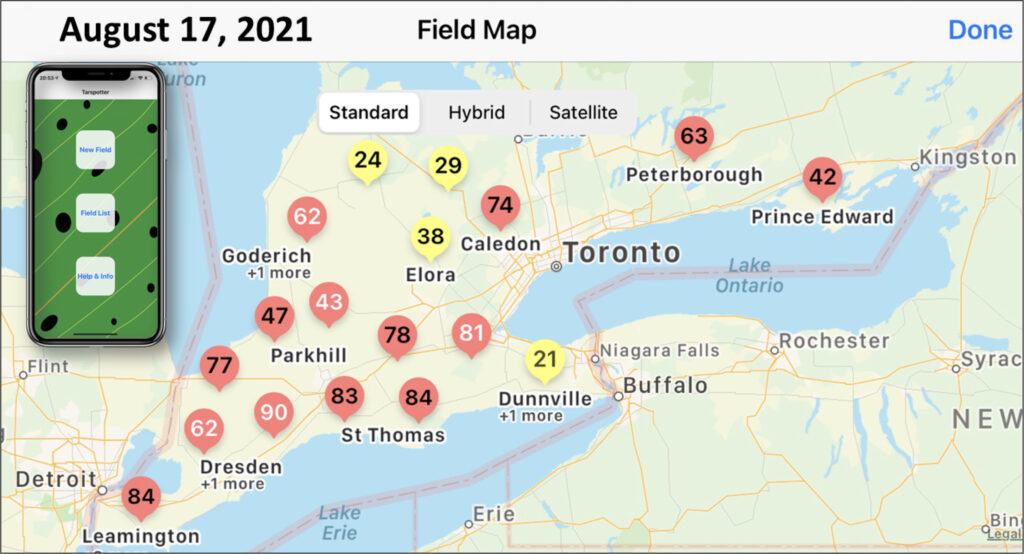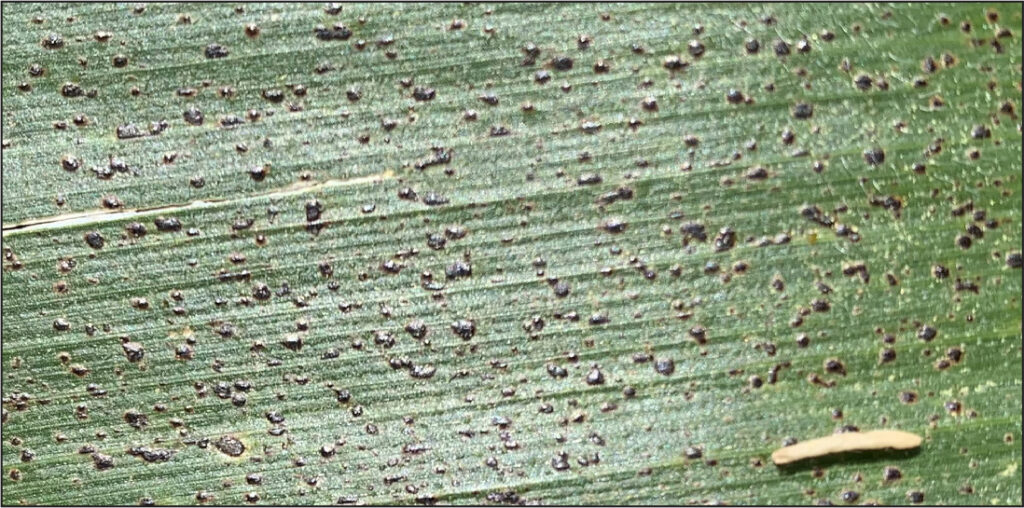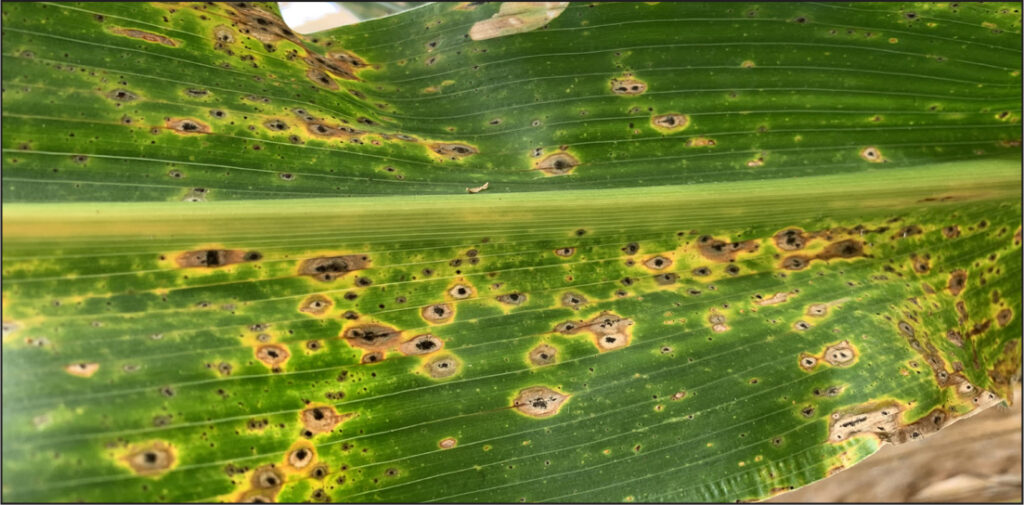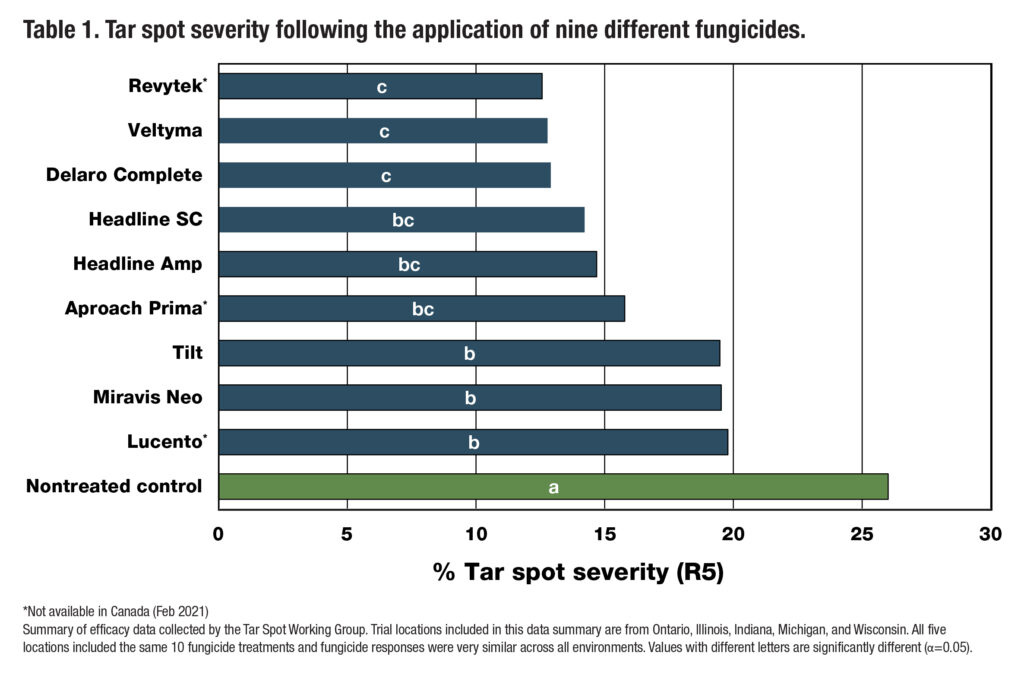Tar spot, a corn leaf disease that can cause significant yield losses, was first found in Ontario in 2020. It has since been found over a wider geographic area. Here’s an overview of what is currently known about best management practices.
The simple answer
Tar spot is here to stay. In the U.S. corn belt, its prevalence has been increasing since 2015. In Ontario, tar spot went from being in only a few fields in five counties in 2020, to being found throughout 17 counties in 2021 (Figure 1).
A proactive management strategy involves early planting of a high yielding hybrid with tar spot tolerance (if known), scouting to identify early infection, using forecasting tools (e.g. Tarspotter app) to access disease risk (Figure 2) and the optimum time to apply an effective fungicide. Current Ontario and U.S. data indicates that fungicides applied between tasseling (VT) and silking (R1) provide optimum control of tar spot when the risk of infection is high. Fortunately, this is also the optimum application timing for other common leaf diseases like northern corn leaf blight and Gibberella ear rot (DON).


A little more information
The inoculating spores of tar spot travel very long distances through the air – and this is the primary source of infection in Ontario fields. Spores overwinter on corn residue and can cause early infection of tar spot in Ontario. Plowing under corn residue and crop rotation may reduce spore levels in the field and delay infection due to airborne spores, but does not stop tar spot from developing.


Hybrid sensitivity along with high spore levels accompanied by wet and humid conditions can increase tar spot severity. Since there are no known tar spot resistant hybrids and evolving information on tolerant hybrids, selecting an effective fungicide and applying it at the right time is critical. Current studies indicate that fungicides with multiple modes of action are the most effective. Fungicides need to be applied prior or in early stages of the disease infection and may prevent infection for 2-3 weeks after application. Therefore, fungicides need to be applied when the risk of infection is high. The Tarspotter app is a useful tool for identifying when the risk of infection is considered high. Combining tolerant hybrids with effective, well-timed effective fungicides will provide the best management of tar spot.
The full story
Since tar spot is a new disease, there is limited long-term, research-based information for disease management of tar spot in the U.S. Midwest and Ontario. OMAFRA and the University of Guelph (Ridgetown campus) are part of the Tar Spot Working Group. This group has been involved in several research trials focused on developing long-term and integrated strategies for tar spot management. Ontario trials have been established in farm fields having significant tar spot (>35% tar spot infection on the ear leaves).
Hybrid susceptibility to tar spot
Hybrid resistance to tar spot is a critical management tool. Collaboration with various corn seed companies began in 2021 to assist in evaluating the tolerance of commercial and experimental corn hybrids to tar spot. During the 2021 season, some hybrids showed good tolerance to tar spot in field sites at Dresden, Ridgetown, Rodney and Tilbury. Unfortunately, very few hybrids examined in Ontario would be considered highly tolerant to the disease. This finding is consistent with similar trials conducted in the U.S. Midwest.
Effectiveness of fungicides
Thankfully, there are many registered products available to farmers that have demonstrated good tar spot control. A comparison of tar spot control from the application of various different fungicides was evaluated at Rodney, Ontario in 2021 (Table 1). All fungicides reduced tar spot severity and increased yield compared to the untreated control treatment (i.e. no fungicide). However, there were a group of fungicides that consistently reduced tar spot severity which led to higher yields in Ontario and U.S. trials. It is important to scout and understand your risk to other diseases and select a fungicide that is effective on the specific leaf diseases found in a field. An overview of fungicide efficacy on common corn leaf disease can be found in Table 2.

